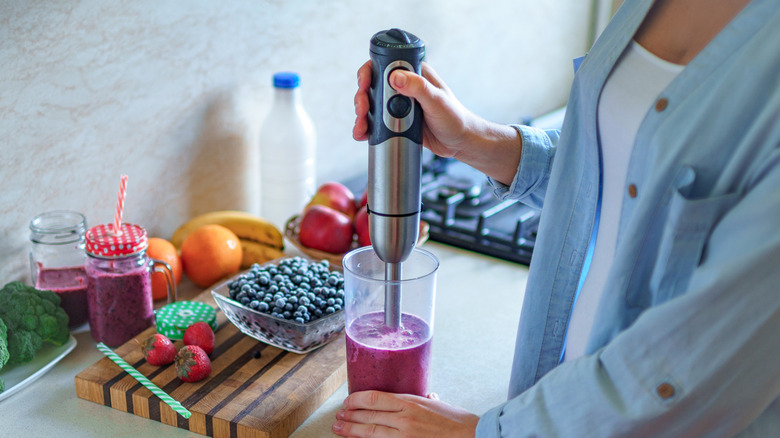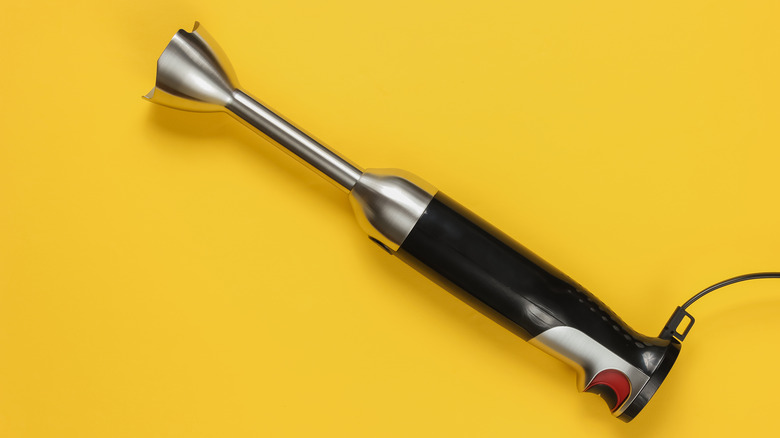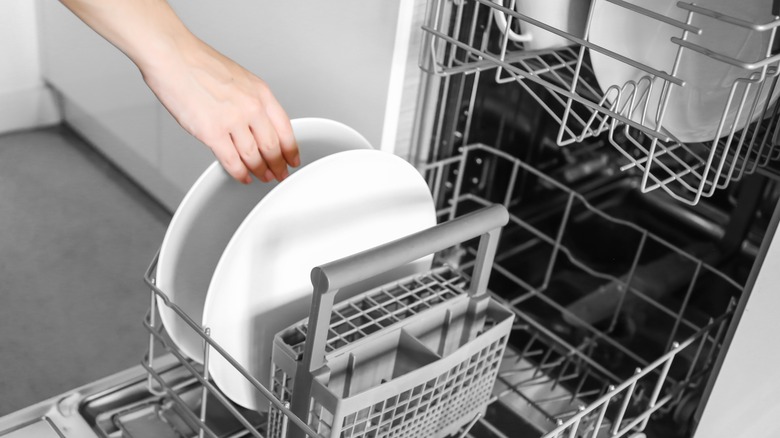How To Effortlessly Clean An Immersion Blender
If you've never owned an immersion blender, oh boy, have you been missing out. They have a tremendous range of applications, from soups to buttercream to mayonnaise, and all of them come with the added bonus of only minimum effort on your part.
But if you've ever had to clean one, you know it can be a huge pain. After all, how are you supposed to get under those blades and into the crevices to keep the entire thing clean? Anyone who's ever tried to thoroughly clean an immersion blender knows it can feel like an absolute nightmare. But it turns out there's a much easier way to clean them that you probably haven't even realized: let the blender do the work for you. You can use the blender's own functionality to let it clean itself and be done in under a minute with basically zero effort. It's way simpler than you may have ever realized.
Just let the blender do the work for you
Cleaning a standing blender isn't much easier than cleaning an immersion blender, but the very nature of an immersion blender makes it seem trickier because the device is so compact. But that small size and portability actually makes the cleaning process easier.
First, fill a tall glass with warm, soapy water. Then, with the blender plugged in and turned on, put it in the water and just run it for around 10 to 20 seconds. That's it — that's really the whole process. The action of the blender itself serves to clean it; the way it got the scunge on it is exactly how it gets it off. All you need to do at that point is dry it thoroughly with a paper towel or kitchen towel, or by standing it upright on a draining board and letting gravity do the drying. Tou don't want to leave water on anything with metal parts, as that's a sure route to rust. Past that, though, you're good to go.
There are other methods you can use if you don't like this one
There are a couple of other options if you don't feel like using this easy solution, but they take much longer and might not work as well anyway. The first is the dishwasher. Assuming your blender is dishwasher-safe (really make sure you check on this), all you need to do is put it on the top rack and run it. This probably goes without saying, but make sure you're putting the blender head in the dishwasher and not the whole thing; electrical components don't take particularly kindly to going through a pots and pans cycle.
The second option is the gentlest, but also the longest: soaking. Take the blender head and soak it in warm, soapy water for maybe an hour. This method might require you to still get into the crevices, but at least anything stuck on there will have been loosened up first. A thin, flexible bottle brush or straw brush can come in handy here; apply the bristles to the crevices where the blades join to scrub out those stubborn food particles.
The good news is that as long as you follow these simple cleaning and caring instructions, an immersion blender will last you a long time. You'll be thankful for that, too, because as soon as you try one, you'll wonder how you ever lived without it.


